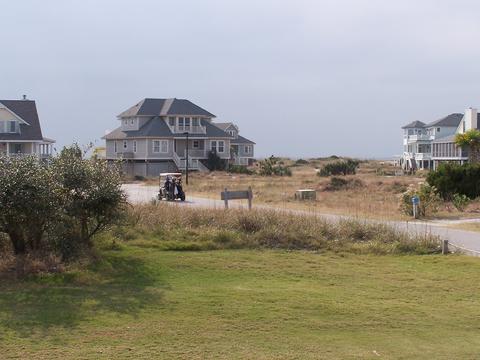I am visiting communities in the historic town of Williamsburg, VA, this week. The plan is to gather information about Kingsmill, Governor's Land, Ford's Colony, Washington National and Colonial Heritage, a 55 and over community with an Arthur Hills golf course. If you are interested in the area and want me to address specific questions about Williamsburg, please contact me through the "Contact" button at the right. Although I will write extensively about Williamsburg and its golfing communities in a future issue of HomeOnTheCourse, our advisory newsletter, I'll file a few notes in this space in the coming days. The following is a quick review of dinner at a local restaurant last night (Sunday).
After a six-hour drive, I was looking for a good meal in comfortable surroundings, including a bar, a TV and something on draft. I found it - for the most part - at the Blue Talon Bistro in the quaint and historic Merchant Square section of the town. The bar had a zinc top, very modern and, though out of place in Colonial Williamsburg, it was wide and immaculately clean. Above the bar was the requisite plasma screen. The programming was a little monotonous, a continuously looping DVD of Julia Child cooking. Without the sound on, Ms. Child's cooking appeared to have no other purpose than to get the taste buds going. It worked.
The Blue Talon offers daily specials as well as a set menu that presents a range of meat, poultry and seafood items. In addition, a special menu with three appetizers and entrees was also offered. Sunday's weekly special is coq au vin; I was tempted, but I opted for the pork belly special, and ordered the country pate as my appetizer. The pate ($7.95) was presented beautifully on a plate that included fanned out slices of fresh French bread, a tiny frying pan filled with gherkins and chunks of candied fruit and a little jar of grainy mustard at the center of the plate. Tiny, salty, pitted French olives and larger green olives were scattered around the plate, making the entire portion as generous as it was pretty. Too bad the pate was lacking the same level of taste of the accompaniments.
Given the size of the appetizer, I wished I had not ordered a salad ($4.95), but it turned out to be a simple plate of lettuces with a tasty vinegar and oil dressing, a generous ramekin of blue cheese chunks on the side. No harm done.
I was looking forward to the pork bellies which, when done properly, have the kind of lustrous texture you would expect of a piece of meat generously layered with fat. The cast iron pot and fragrant beefy and anise scented steam promised something special, but sadly, these pork bellies ($21.95) didn't measure up. The meat was not only too chewy, but the fat was cold and un-melted. This was curious coming from a steaming cast iron pot - I was warned not to touch it - and I can only think that my bellies had been taken out of the refrigerator, or maybe even the freezer, just moments before immersion in the pot. I put the meat back in the pot, which helped a little. But since it took 25 minutes after my salad for the steaming pot to arrive, there was no good excuse for this miss. If I'm going to give up so many calories, I want my fat melted at least.
My meal at the bar took a full 90 minutes, not long if you are in the dining room with wife and friends, but too leisurely for eating at the bar. And to add insult to injury, the bartender coughed continuously throughout the meal.
The Blue Talon promised a lot but came up short on its delivery. I might give it one more chance this week, but I will choose my dishes more carefully. Web site: www.bluetalonbistro.com
























